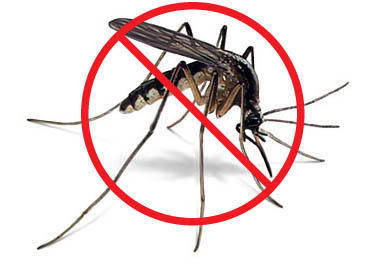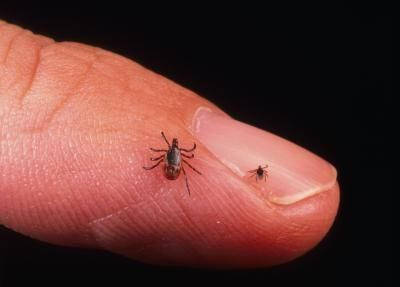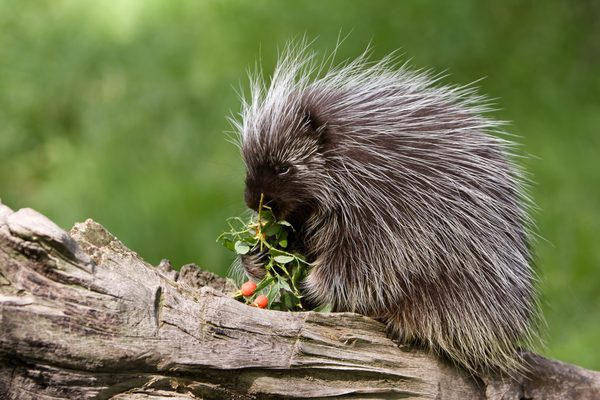Summer camp is a wonderful opportunity for children to become more independent and responsible for themselves. Self care is certainly a part of this. At SNC our natural environment does provide challenges that children should be aware of and learn how best to deal with the situations. Please review the below items and go over them with your child. Fear is not the purpose but to have campers have a basic understanding about these things. Once at camp we will remind your child.
 Sunscreen Basics
Sunscreen Basics
We are outside in the sunshine alot at camp. Unless of course it’s raining. Your child should become familiar with sunscreen usage. It is important to cover all exposed areas (especially easily overlooked places like ears, tops of feet, backs of knees, and hands) 30 minutes before one heads outside so the skin has time to absorb it. Reapply at least every few hours, even more frequently if your swimming, playing in water, or sweating.
 Dehydration Basics
Dehydration Basics
At camp children are much more active than most other times of their lives. So, water is hugely important.We have an amzing deep well that has some of the best tasting water you can find. Please pack a water bottle that your child will feel comfortable to cary with them at all time. Encourage them to drink before they get thirsty. Nearly, 50% of all health center cases can be fixed with water. So be sure to tell you camper to carry their bottle and drink often.
 Mosquito Basics
Mosquito Basics
A mosquito is a very annoying flying insect. The female mosquito is always on the lookout for blood because that is what it needs to make its eggs. Once bitten, bites can be swollen and itchy. If scratched and not treated bites can become infected. The best treatment is not to keep mosquitos off you.
Mosquitoes Prevention - Mosquitoes are mostly active in the evening or early morning, so here are some ideas to help stop you becoming dinner! If you are outside around sunset, then you could:
-put on a strong insect repellent (like 20% deet) on your clothes and person before you go out - don't forget your feet, ankles, shoes or the back of your neck
-wear clothes that cover most of you (loose clothes are best, as mosquitoes can bite through tight jeans!)
-Keep moving, do not sit still
-remove yourself from their presence… go inside or to a new area.
Mosquito Bite Cures - It is important to minimize the itching of the bite area. Campers need to be aware that severe scratching can lead to scaring and other infections. So we encourage campers not to scratch and go see the nurse to have some anti itch cream applied.
 Tick Basics
Tick Basics
We feel it is important to let you know that we have ticks at camp. Ticks are insects that suck the blood of their host… Kinda creepy especially to kids. Yet, after a few days with tick most children just pick them off and move on with their day. Of the 16 different varieties in Wisconsin only one the deer tick has the ability to carry the bacteria that can cause Lyme Disease. At camp our staff are trained in ticks and work closely with the children to minimize the transmission of Lyme disease. However, we ask for your support in this. Please take time to talk to you children about ticks. Don’t scare them but inform. The best part of all this is, the disease can easily be cured with a dose of antibiotic if caught early.
Lyme disease transmitted - Not all deer ticks are infected with the bacteria that cause Lyme disease. In most cases, the tick must be attached for 36 hours or more before the bacteria can be transmitted. Lyme disease does not spread from one person to another.
Tick Fact - Deer Ticks are the smallest of all ticks, only the size of a pin head and not that common at camp. At camp we mostly have Wood Ticks and these are much larger and DO NOT carry Lyme disease. Deer ticks can only crawl; they cannot fly or jump. Ticks found on the scalp have usually crawled there from lower parts of the body. Ticks will crawl several feet toward a host. Ticks tend to be more active on warm summer days.
Tick Prevention - The best prevention is keeping them off of us. Deer ticks live in shady, moist areas at ground level. They will cling to tall grass, brush and shrubs, usually no more than 18-24 inches off the ground. Deer ticks cannot jump or fly, and do not drop onto passing people or animals. Once a tick gets on the skin, it generally climbs upward until it reaches a protected warm dark area. Because we are in the woods many times a day we do our best to prevent them from getting on us by:
-Wearing light-colored clothing with a tight weave to spot ticks easily.
-Wearing enclosed shoes, long pants and a long-sleeved shirt. Tucking pant legs into socks or boots and shirt into pants.
-Checking clothes and any exposed skin frequently for ticks while outdoors and checking again once indoors.
-Using insect repellent. Follow label directions.
-Staying on cleared, well-traveled trails. Avoid contacting vegetation.
-Avoiding sitting directly on the ground or on stone walls.
-Keeping long hair tied back, when in woods.
Tick Repellents - There are many different products on the market, with different ingredients, concentrations and effectiveness. The most effective contain DEET, permethrin (only to be applied on clothing), picaridin or oil of lemon eucalyptus. If you decide to use one, be sure to follow label directions and apply repellent carefully.
Tick Checks at Camp - The best defense at camp are daily tick checks. We ask children to check themselves before bed. With counselors' supervision this includes going over the entire body and scalp feeling for any sort small bump. Often they are found on the scalp. Since ticks need to be embedded over 30 hours, doing this daily, eliminates most situations. We have had very few cases over the years.
Symptoms of Lyme Disease - In 60-80 percent of cases, a rash resembling a bull's eye or solid patch, about two inches in diameter, appears and expands around or near the site of the bite. Sometimes, multiple rash sites appear. The early stage of Lyme disease is usually marked by one or more of the following symptoms: chills and fever, headache, fatigue, stiff neck, muscle and/or joint pain, and swollen glands. If Lyme disease is unrecognized or untreated in the early stage, more severe symptoms may occur. As the disease progresses, severe fatigue, a stiff aching neck, and tingling or numbness in the arms and legs, or facial paralysis can occur. The most severe symptoms of Lyme disease may not appear until weeks, months or years after the tick bite. These can include severe headaches, painful arthritis, swelling of the joints, and heart and central nervous system problems. If any of these appear when your child returns home take them to the Dr. and suggest Lymes Desease.
Lyme Cure - Most early stages of Lyme disease can be treated very effectively with oral antibiotics (amoxicillin). In some cases, Lyme disease in its later stages can be difficult to treat and severe cases may require intravenous treatment. Some people may have persistent or recurrent symptoms even after appropriate antibiotic treatment, a condition referred to as post-treatment Lyme disease syndrome (PTLDS). So it is important to catch lyme decease early.
Bug Spray
The information contained below is from the Centers for Disease Control and Prevention in regards to prevention of bug bites.
Permethrin- Permethrin is a highly effective insecticide, acaricide and repellent. Permethrin-treated clothing repels and kills ticks, chiggers, mosquitoes, and other biting and nuisance arthropods. Clothing and other items must be treated 24–48 hours in advance of travel to allow them to dry. As with all pesticides, follow the label instructions when using permethrin clothing treatments. Clothing, hats, shoes, bed nets, jackets, and camping gear can be treated with permethrin for added protection. Products such as Permanone and Sawyer, Permethrin, Repel, and Ultrathon Permethrin Clothing Treatment are registered with EPA specifically for use by consumers to treat clothing and gear. Alternatively, clothing pretreated with permethrin is commercially available, marketed to consumers in the United States as Insect Shield, BugsAway, or Insect Blocker.
Insect Pepelent - Use insect repellents on the skin and clothes that contain at least 20% DEET. (“Natural” products, such as citronella, are not effective on ticks.)
 Lice Basics
Lice Basics
This day and age Lice are very common and can easily spread where children are in groups, like in a cabin. Our best defense is not to bring them into camp. This is done by YOU checking your child in advance and even combing looking for nits. Once at camp we do a head check during orientation day to look for any lice. This inspection is done by our nurse. However, because the nits or eggs are so small they often cannot be seen by this process and it might take up to 2 weeks to be discovered. Remember that lice maybe a troublesome to get rid of but it has no inherent health risk.
Lice Facts
They don’t jump (they’re not fleas). They crawl fast if they're on hair, but off the hair they’re slow.
Getting lice has nothing to do with hygiene.
Pets don’t get lice.
Lice can live in your hair, eyebrows or eyelashes.
Eggs (or nits) hatch about every 9 days.
Lice can hold their breath for up to 8 hours, that’s why many treatments involve leaving hair “smothered” for at least that amount of time.
The CDC recommends manual removal of lice and nits from hair.
To get rid of nits, one must comb through each strand of hair with a lice comb, and the process can last anywhere from 30 minutes to 2 hours.
It is hardest to detect lice in blond hair.
Practice Good Habits - To reduce the chance of you or your child contracting a case of head lice, start by NOT sharing items that touch the head. Though it may be tempting to share personal belongings (especially at camp), doing so can lead to the spread of head lice. Avoid sharing:
-combs and brushes
-hair clips and accessories
-hats and helmets
-scarves and coats
-towels
-headsets and earbuds
When kids hang around the cabin and each others beds, they may naturally place their heads close together. This is a time that lice may move from one to another. Remind your child sitting on anthers bed is OK but laying may not be the wisest. Avoid games and activities that lead to head-to-head contact with cabinmates.
Lice are Found - Once lice are found within a cabin then we move to action by removing these critters from each of the campers using an over the counter lice removal product. Also important is minimizing their transmittal by removing items that could be infected.. The key at this point is to do it in away that does not scare or make the infected camper feel uncomfortable.
 Wild Critter Basics
Wild Critter Basics
Camp provides a wonderful opportunity to be up close with nature. Fortunately, the north woods does not have an abundance of verminous biting creatures. Yet, it is important for children to know that wild animals may seem cute and furry but when they feel threatened they BITE. So it is important your child thinks about which critters are safe and which are not prior to trying to make a new friend with them. Best advice- leave the wild ones alone and go to the Nature Center to pet and play with critters.






